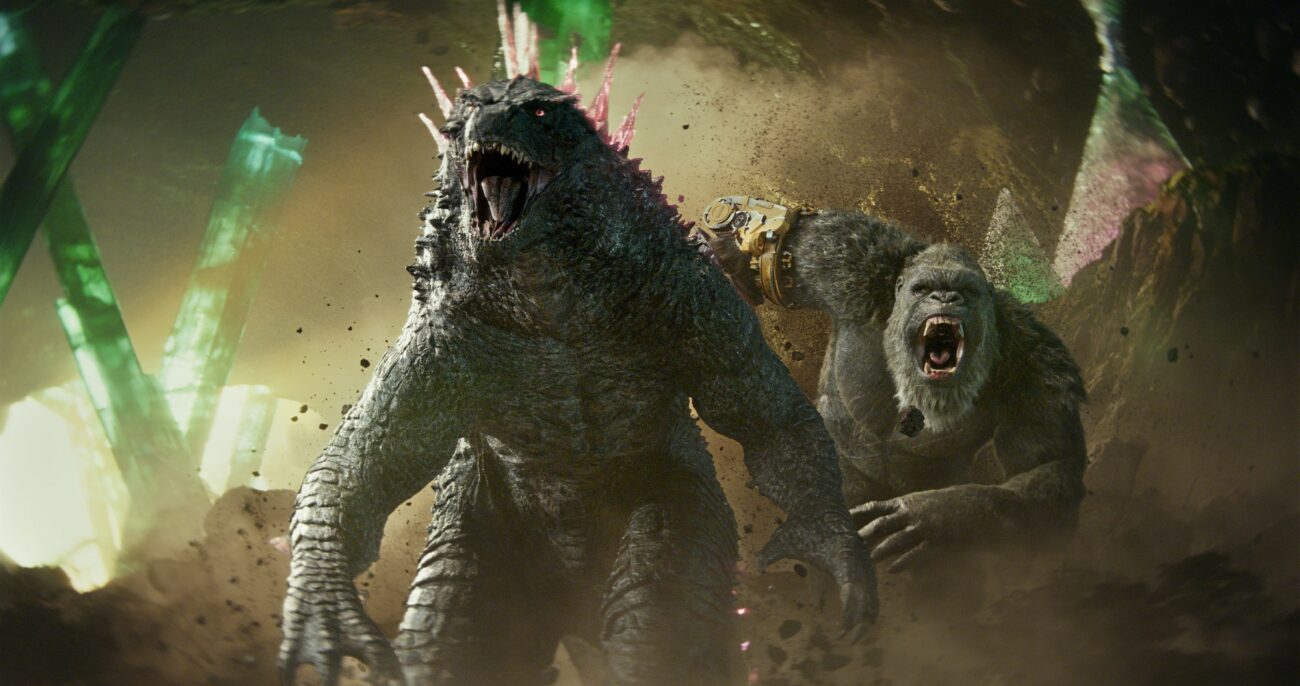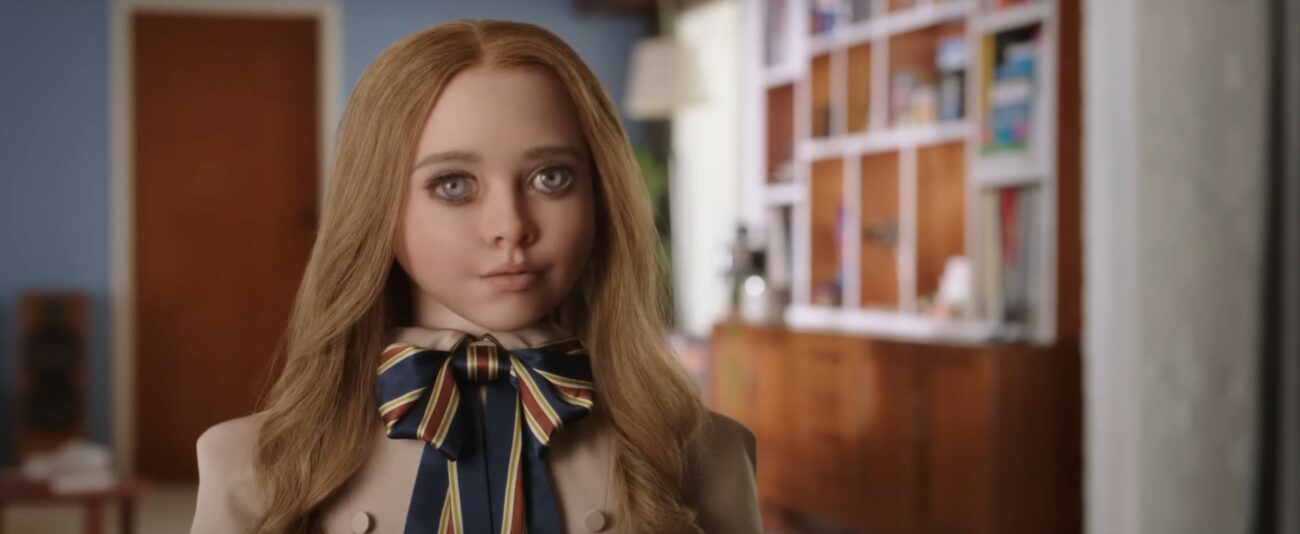David Lynch’s 1997 noir film, Lost Highway, featuring an embarrassing amount of Marylin Manson, is at least Wikipedially about jazz musician Fred Madison (Bill Pullman), who murders his wife Renee (Patricia Arquette), whom he suspects of having an affair with porn facilitator and pimp Andy (Michael Massee). While awaiting execution, Fred falls into a psychogenic fugue where he becomes Pete Drayton (Balthazar Getty), a troubled young man and gifted mechanic embroiled in an affair with Alice (also Arquette), the girlfriend of mob boss Dick Laurent aka Mr. Eddy (Robert Loggia). Since Highway’s release, there have been all the usual discussions about representations of Id/Ego, Regret/Repression, Yin/Yang, always coming back to the eternal question: what do the red curtains mean this time?
The first film in Lynch’s unofficial Los Angeles trilogy, Highway is a bridge over The Straight Story, thematically and visually connecting Fire Walk with Me and Mulholland Drive. It is metaLynch, a Lynch movie about Lynch movies, Lynch telling a story about how Lynch tells stories. It’s a transitional piece about transitional states where text and subtext subsume into each other to work as a kind of reference piece for Lynch’s favorite symbology.
Lynch uses technology (simple, but often abstracted) as a way for characters to reach (not always successfully) outside of their delusions for what they imagine to be objective information. This will be front and center throughout Highway, right from the first scene. In it, a languidly troubled Fred perches next to the intercom in his home, while a man on the other end (at the exterior door) intones “Dick Laurent is dead,” followed by the faint sound of sirens. Viewers don’t know who Dick Laurent is at this point, and it doesn’t appear that Fred does either.
Renee later discovers an unmarked envelope containing a videotape on the front doorstep. She seems reticent to share her discovery with Fred, or watch the tape, but Fred proposes that they watch it together. The tape shows a brief clip taken from outside their home—a realtor, Renee speculates with relief. On another morning, another tape arrives, this one showing the inside of Fred’s house with noticeably poorer video quality than its predecessor. The police arrive to investigate, and Fred explains to them that he has an alarm but not a video surveillance system because he doesn’t like video cameras—“I like to remember things my own way. How I remembered them, not necessarily the way they happened.” After a strange party at Andy’s house, Fred receives one final tape, this one almost unviewable, but we see enough to know that Renee has been murdered. Cut to Fred getting punched in the face by the same police that had investigated the second tape. Obviously, the tapes are a clue about what’s really going on, which becomes clearer as the film goes on and we see the way other pieces of technology are used.
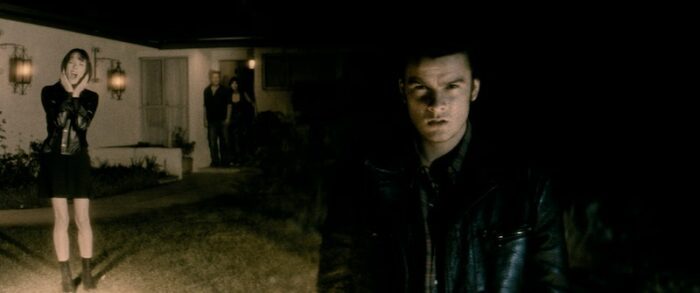
For example, most of the phone conversations throughout the film are incomplete in some way, missing some visual or auditory piece. There are a lot of half-faces and mumbles through receivers, depending on what’s more important: the information being conveyed, or the person conveying it. At one point, Fred attempts to call his house from the club he is performing at, but the call is never answered, leaving him to stew in his own paranoia about Renee’s activities. The most interesting variation on this comes at Andy’s party, before Renee’s murder, where Fred meets the Mystery Man (Robert Blake). During this encounter, the Mystery Man claims to have met Fred before, and to be at his house at that exact moment. To prove it, he produces a cell phone, and tells Fred to call his (Fred’s) house and find out. Sure enough, a voice that sounds like the Mystery Man answers.
When the Mystery Man later appears toting around a video camera along with his cell phone, it’s clear that he made the videos that appeared on Fred’s doorstep. As we get more and more views from the Mystery Man’s camera, the quality of the footage steadily improves until the end, when he shares the camera’s playback screen with Fred. The narrative the video footage has weaved becomes clear then: it’s a record of Fred’s memory, the events (however distorted or hazy) that he has built his illusions around. The camera and videotapes serve a similar function to Laura Palmer’s diary, or the box that Diane Selwyn’s blue key opens; whether or not the contents are exactly factual, they are true, no matter how Fred chooses to remember them. That the Mystery Man relies on a cell phone finds its meaning in this context—it can go with him anywhere. There is no getting away from the truth. The deteriorating, then resolving video quality illustrates his attempt (and ultimate failure) to erase this truth.
The Mystery Man gives Fred one last reality check with a short monologue about the death penalty in “the East, the Far East”, where the condemned are put in an inescapable place to await a fate they know will come but not when or how. The implication of this is that Fred’s own mind has become his prison or tomb. Fred then kills Laurent. Laurent himself is fresh from having sex with Renee, even though there is some debate between Laurent, Fred, and the Mystery Man whether she is Alice or Renee, and who Fred actually is. In the end, his purpose served, so the Mystery Man disappears, along with his phone and camera.
In the final scene, we go back to the intercom at Fred’s house, but this time from the outside. The police are in pursuit, the faint sirens we heard in the opening on Fred’s heels. However, the voice over the intercom in this scene isn’t quite the same as the voice at the beginning; even the timing of the sirens is slightly off. The Fred we’re riding with is no longer enclosed in denial (his house). He is aware, on some level, that his demise is inevitable, and the end is near—Dick Laurent is dead, there is nothing more to be done.
In its entirety, Lost Highway is movement through the ultimate liminal space—the human psyche and all its different aspects and expressions. Fred’s departure from himself comes via that old Lynch favorite: head drama/trauma, here in the form of a medication-resistant headache that plagues Fred in his prison cell until it becomes so unbearable that he swaps out for Pete. (Leland Palmer would sympathize on several levels.) When Pete is reminded of his Fredness by Fred’s (tenor) sax rant on the radio at work, it induces another headache. Andy, as a representation of the (sexual) threat posed to Fred/Pete by other men in general, dies when a glass coffee table is improbably (and stunningly) embedded into his head after a scuffle with Pete. Finally, Fred exits the film with police in pursuit, his head thrashing and shuddering as he races towards oblivion.
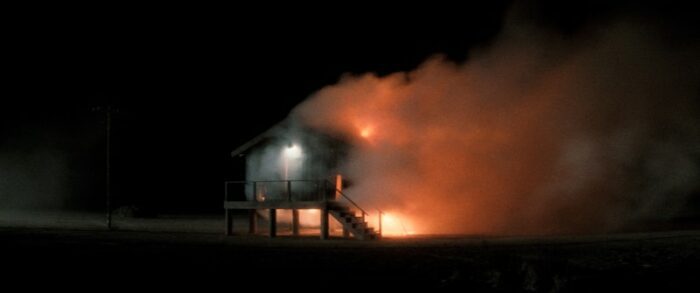
Less literally, in the early part of the film which mostly takes place in Fred’s house/denial, Lynch relies on curtains (obviously), darkness, negative space, mirrors, and counterintuitive room layouts to express disorientation and dissociation. The spaces that the film moves into as it goes on, spaces outside of Fred/Pete’s control, are often strange, by turns sinister and ethereal. They are the kind of way stations between realities that Lynch often uses (and always pointedly so) to reveal the hidden workings of a film’s universe—much like the Black Lodge, or Club Silencio. We see Fred playing sax (tenor) in a packed club, where the chaos of noise and light speak to Fred’s teetering mind. Andy’s house serves a related purpose as the place where Fred/Pete overlap, and the façade begins to crack. The first scene at Andy’s when Fred meets the Mystery Man (how things actually happened) is where his suspicions of Renee fester into something dangerous. It is at Andy’s where Pete begins to have his own misgivings about Alice, provoked in part by stand-ins for Fred’s humiliation and insecurity in the form of the porn starring Alice being projected onto a huge screen in Andy’s living room, and a picture of both Alice and Renee along with Laurent and Andy. Andy’s death at this point, and the subsequent police investigation, closes this as a revelatory space for Fred/Pete.
From Andy’s, Alice and Pete head to a cabin in the desert where Alice’s fence supposedly lives. We see this cabin catch fire and explode, then the film reverses and puts it back together at two points: when Fred is on death row before he becomes Pete, and then again just before Pete and Alice arrive. What even happened in that cabin before Pete and Alice arrived? It doesn’t matter. The cabin is a temporary clarity that Fred can put together here and there but is never permanent. Once both Pete and Alice enter and exit the cabin, the narrative takes its next hard turn. Alice emerges from the cabin with her real intentions, and the second time she enters the cabin, after telling Pete that he’ll never have her, she doesn’t come back out, and Pete is Fred again. The Mystery Man appears, and brings Fred to the Lost Highway Hotel, a hellish and labyrinthine space where Fred faces Renee’s infidelity with Dick Laurent directly.
This is as good a place as any to discuss how sex between major characters in Lynch films tends to occur at turning points that facilitate a shift in the story, but without requiring character growth or commenting on relationships qua relationships. At least one party ends up worse off than they started. In keeping with the idea of Highway as a transitional piece, we could look at how Laura Palmer acts out sexually to cope with abuse in Fire Walk with Me; or the lopsided sexual encounters between Diane/Betty and Camilla/Rita in Mullholand Drive; or we could look at just about any other of Lynch’s works. This particular beat hits twice in Lost Highway, bookending the central narrative. First, Fred’s failure in bed with Renee preceding her murder; and again, Pete and Alice’s desert tryst ends with Pete’s subsumption back into Fred which brings viewers into the final sequences,. Here, Lynch reveals what we have known all along: that he really, really likes to explore the duality of human nature.

In his central female characters, this duality is usually expressed in modified madonna/whore symbolism with a culturally predictable blonde/brunette dichotomy. It’s never subtle, and still never quite as on the nose as it is in Highway, which dives deeply into the objectification and commodification of Renee/Alice. When the police investigating Andy’s murder mull over the picture that previously bemused Pete (who at the time had even asked which woman was Alice) now shows just Renee with Laurent and Andy. It’s a not-subtle way to let the viewer fully appreciate that Fred’s perception of Renee’s betrayal is really just about his expectations for his/a wife, rather the than the actual woman that Renee was.
This hyper-idealization/sexualization goes hand-in-hand with central male characters that inhabit a world they believe to be governed by the whims of female sexuality, leaving them in a constant state of half-terrified fascination, which they process using traditional tropes of masculinity—power and sex (and cars). Highway doesn’t just use this dynamic to describe relationships; this dynamic is at its core. When Alice tells Pete that he’ll never have her, that denial humiliates the youthfully macho Pete and triggers the reemergence of Fred, who couldn’t perform in bed or do anything but scowl and wander off while his wife publicly preferred the company of other men, impotent unto murder.
All of it is threaded together by a half a dozen nighttime driving sequences, each during transitional scenes. Notably, when Fred is moving into/out of Pete, the lines are double yellow (two-way, no passing), which evokes a sense of intent—Fred getting out of his head. The lines are otherwise single yellow dashed (two-way, passing permitted), suggesting less certainty. Lynch uses similar shots of roads in other works, also suggesting movement through some kind of timeless passage (Twin Peaks: The Return is replete with them), but such shots never feel so specifically intentional, so necessary for meaning, or, you know—have the movie named after them.
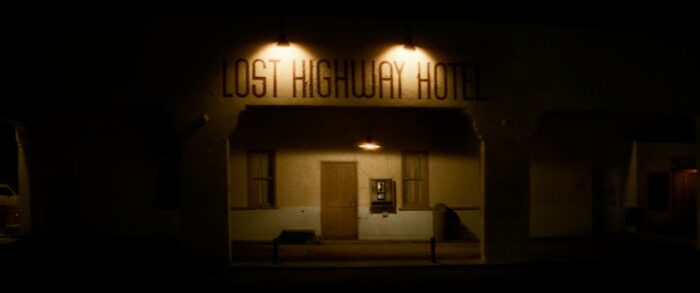
Lost Highway might be Lynch’s most frustrating work. It teases something sparse and spring-tight, then unwinds into a sprawl of recursion. It benefits from taking a long view of Lynch’s output more than any of his other films. Even Fred’s telltale line—”I like to remember things my own way. How I remembered them, not necessarily the way they happened”—is not just the key to Lost Highway; it is, like the film itself, an elegant allusion to Lynch’s approach to filmmaking.
You Might Also Enjoy:
The First Omen Is a Surprisingly Worthwhile Prequel
Defending Dale Cooper & Annie Blackburn’s Twin Peaks Romance


